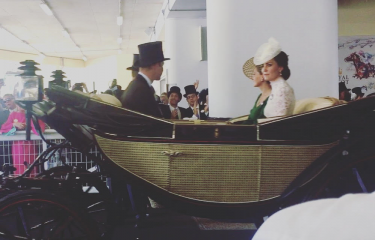Football collectibles: Which ones should you invest in?
The sports memorabilia market is estimated to be worth £3.7 billion, and although the majority of this is made up of US sports, football owns a big chunk of the industry too. With fans being so passionate about their clubs, sentimentality inspires big purchases, while avid collectors are spotting new trends and waves of collecting in a digital world. If you’re considering investing yourself, here are four different types of football memorabilia you need to know about.
1. Vintage shirts
In recent years, vintage football shirts have become big business. Sellers are springing up like mushrooms after the rain, stocking Premier League classics to niche Bundesliga B gems. As usual, rarity fetches the most value, but aesthetic appeal is also an indicator of worth.
Vintage football shirts is an industry that feeds off nostalgia. Fans love looking back to old football matches when they were kids, or ones from the ‘90s era in which they were born. But the 90s kids have grown up and got jobs, and with it, disposable income to spend. Any shirt with a legendary player on the back — Zidane, Brazilian Ronaldo, Del Piero — is particularly sought-after. After that, it’s iconic and cult jerseys: the likes of England’s shirt from Italia ‘90, Newcastle’s Brown Ale-sponsored jersey, or Liverpool’s Adidas-templated beauties from the mid-90s. Perhaps the best indicators of value, however, are match-worn shirts. There’s something intangibly special about knowing a certain player donned it in a match. Just consider that the shirt won by Pele in the 1970 World Cup final sold for over £157,000 in 2002, for example.
For shirts as special as these, you won’t want to devalue them by wearing them around the house — they are far too valuable. Instead, consider framing them. Not only does this keep the jersey protected, but it is also the best way to showcase it in your home. For advice on how to do this effectively, check this helpful guide on how to frame a football shirt by London-based framing company Soho Frames.
2. Matchday programmes
Programmes are dead expensive nowadays — for standard league games you’re looking at around three or four pounds a pop, while high profile ones, such as big internationals or cup finals, you could pay up to a tenner. Their value, however, is something that tends to go up the longer you keep them. The very first football programmes were published around the same time as the launch of the Football League in 1888. As founders of the league, Aston Villa’s ‘Villa News and Record’ was one of the first programmes in circulation (good luck getting hold of a 130 year old programme though).
During and after World War II, a paper shortage cut the number of programmes that clubs could produce, making any that were released around the time a lot more collectible today. For example, a family from Ipswich managed to make more than £46,000 in 2012 by auctioning off a set of football programmes they stumbled across in their house. The highest sale was £750 for an England vs. Wales international which took place during the war — not bad for something that was gathering dust in their attic. But this doesn’t mean the only programmes worth collecting are wartime ones. There are other factors too that will determine their value, including these four:
- Age — anything over 50 years old is most collectible.
- Rarity — if there are many available, this will bring the value down.
- Fame — programmes from famous matches are the most prized and valuable.
- Condition — creases, missing staples and water damage all harm the programme’s price.
3. Trading cards
In December 2020, demand for Champions League trading cards was so high that manufacturer Topps UK’s website crashed. In terms of determining value, It’s simple supply and demand. There are many different types of cards and stickers available with differing levels of supply. Budding collectors want non-base cards and rookie (promising youngster) ones, which is where a bit of knowledge and foresight comes into it. If you can get hold of rookie cards for players who turn out to become big stars, like Messi, Ronaldo or Mbappe, they could multiply in value. In terms of actual figures, you’ll find Messi’s 2004 Barcelona card and Zidane’s card at his first club, AS Cannes, to be worth tens of thousands.
The trading card boom isn’t just reserved for men’s players, however. In June 2021, a Mia Hamm rookie card set a record when it sold for around £25,000 at an auction, making it the most expensive female sports card of all time according to ESPN.
4. NFTs
NFTs (non-fungible tokens) are digital assets that are verified by the blockchain (the same ledger that facilitates cryptocurrency). For some people, getting their heads around the value of these things is difficult. But for ease, you can think of them as similar to trading cards, just in a digital format. Others may believe the NFT space as a fad, but with the prime NFT marketplace, OpenSea, being valued at $1.5 billion (£1.1 billion), it’s something worth paying attention to.
Moreover, with other sports projects like NBA Top Shot, which has made over $230 million (£168 million) selling basketball highlights as digital assets, it’s no surprise football NFT projects have started to emerge. One that seems to be growing in popularity is So Rare: a fantasy football game based around blockchain, where users can trade players, enter tournaments and compete for prizes. More of these types of projects are bound to keep popping up, so if you want a chance of getting in early and potentially making some big money, doing some research on NFTs and the spaces that house them will be time well-invested. Not all NFT projects will be successes, but if you can use your intuition and commit to one that does, you could be richly rewarded.








